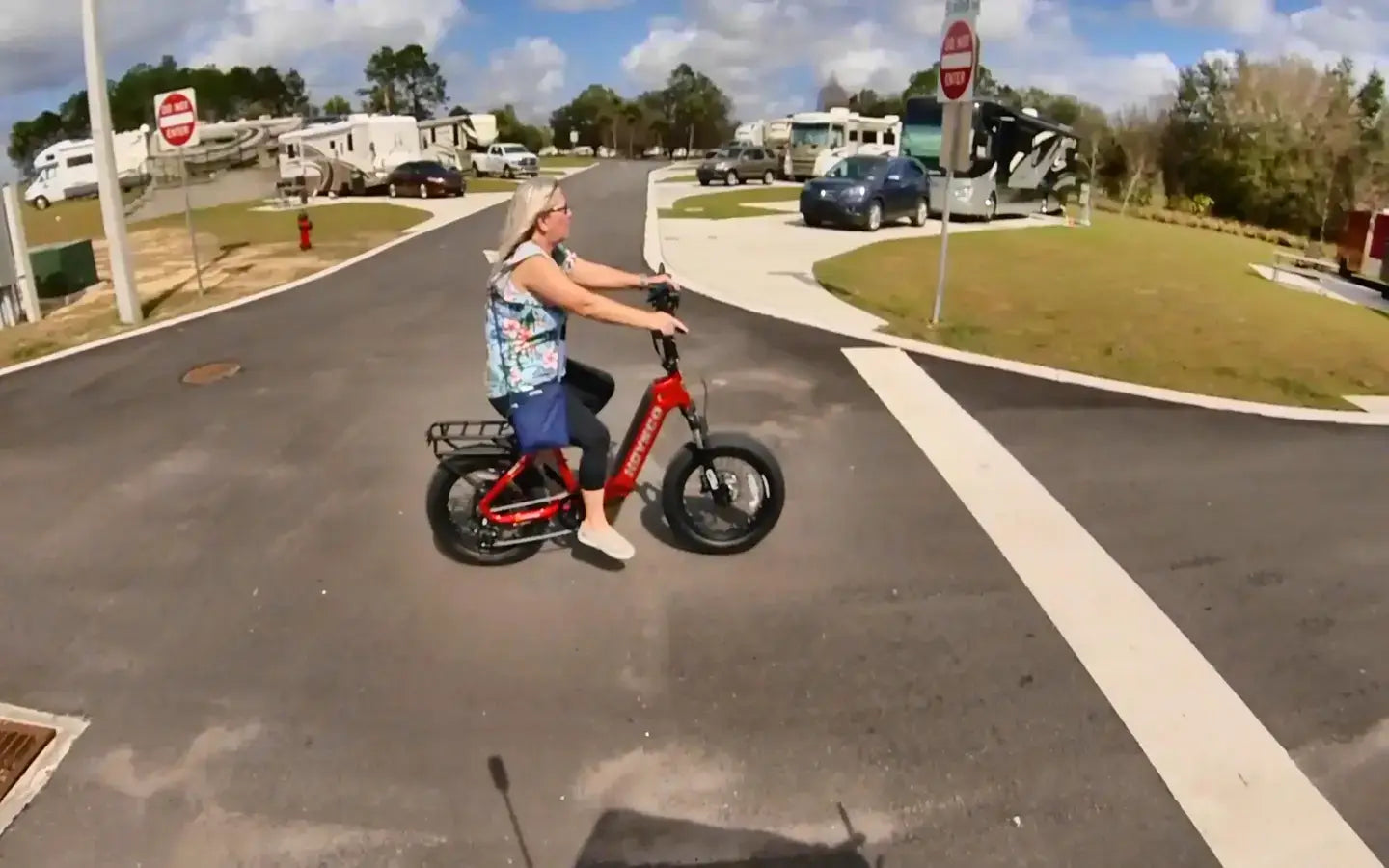
- by LiuJiazhu
How Do Eco-Friendly Urban Electric Bikes Work?
- by LiuJiazhu
Eco-friendly urban electric bikes operate by combining human pedaling with electric motor assistance powered by rechargeable batteries, offering a sustainable, efficient, and low-emission transportation alternative for city commuting. These bikes reduce reliance on fossil fuels, lower carbon footprints, and incorporate smart technologies to optimize energy use, making urban travel greener and more convenient.
Eco-friendly urban electric bikes integrate several key components: a brushless electric motor (usually hub or mid-drive), a lithium-ion battery pack, a controller system, and sensors that detect pedaling input. The motor assists the rider by providing torque proportional to pedaling effort or throttle input, reducing physical strain and enabling longer rides with less energy. Batteries are rechargeable and designed for longevity and efficiency, often sourced from eco-conscious manufacturers.
Chart: Core Components of Eco-Friendly Urban Electric Bikes
| Component | Function | Eco-Friendly Benefit |
|---|---|---|
| Electric Motor | Provides pedal assistance | Reduces reliance on fossil fuels |
| Lithium-ion Battery | Stores and supplies electrical energy | Rechargeable, long lifespan |
| Controller System | Manages power delivery and efficiency | Optimizes energy use |
| Sensors | Detect pedaling and adjust motor assistance | Enhances ride efficiency |
Modern eco-friendly urban e-bikes use lithium-ion batteries with high energy density, enabling longer ranges and lighter weight. Advances in battery chemistry and management systems improve charging speed and lifespan, reducing waste and resource consumption. Some models incorporate regenerative braking or solar charging to reclaim energy, further enhancing sustainability. Efficient battery use minimizes environmental impact compared to gasoline-powered vehicles.
Smart features such as integrated GPS, smartphone connectivity, and anti-theft systems optimize urban e-bike use. Intelligent controllers adjust motor assistance based on terrain and rider input, conserving battery power. Apps enable route planning to avoid traffic and maximize efficiency. Regenerative braking systems convert kinetic energy into electrical energy during deceleration, extending battery life and reducing energy waste.
Eco-friendly urban electric bikes contribute significantly to reducing urban congestion, air pollution, and greenhouse gas emissions. By replacing car trips with zero-emission rides, they support city goals for net-zero carbon targets. Their compact size and agility ease traffic flow and parking challenges. Moreover, they promote healthier lifestyles by encouraging active transportation combined with electric assistance.
Emerging designs such as hubless wheels reduce mechanical friction and weight, increasing efficiency and ride smoothness. Lightweight carbon fiber or aluminum frames decrease overall bike weight, improving battery range and rider comfort. These innovations lower material use and energy consumption during manufacturing and operation, aligning with eco-friendly principles.
While electric bikes produce zero emissions during use, battery production and disposal pose environmental challenges due to resource extraction and chemical waste. Manufacturers are adopting greener production methods, recycling programs, and using sustainable materials to mitigate impacts. Advances in solid-state batteries and modular designs aim to reduce environmental footprints further.
When choosing an eco-friendly urban electric bike, prioritize models with high-capacity lithium-ion batteries, efficient brushless motors, and smart energy management systems. Look for features like regenerative braking and connectivity for optimized use. Consider bikes with lightweight frames and sustainable manufacturing credentials. Brands like HOVSCO emphasize safety, durability, and innovation in eco-friendly designs. Evaluate warranty, battery lifespan, and after-sales support to ensure long-term sustainability and value.
“HOVSCO is dedicated to advancing eco-friendly urban electric bikes by integrating cutting-edge battery technology, intelligent motor control, and sustainable materials. Our designs focus on maximizing energy efficiency and rider comfort while minimizing environmental impact. We believe that e-bikes are pivotal in shaping greener, healthier cities by offering practical, zero-emission alternatives to traditional transportation.” – HOVSCO Sustainability Team
Q: How do eco-friendly urban electric bikes reduce carbon emissions?
A: By replacing car trips with electric-assisted cycling, they produce zero tailpipe emissions and lower overall carbon footprints.
Q: What battery technologies make e-bikes sustainable?
A: Lithium-ion batteries with high energy density, regenerative braking, and emerging solid-state batteries enhance sustainability.
Q: Can smart features improve e-bike efficiency?
A: Yes, features like GPS, adaptive motor control, and regenerative braking optimize energy use and extend battery life.
Q: Are eco-friendly e-bikes suitable for all urban terrains?
A: Yes, with adjustable motor assistance and durable designs, they handle varied city landscapes efficiently.
Q: What environmental impacts arise from e-bike manufacturing?
A: Battery production and disposal involve resource use and waste, but advances in recycling and sustainable materials mitigate these effects.
Share:
Why Read Hovsco 27.5 City E-Bike Reviews?
Why Choose Eco-Friendly Urban Commuter E-Bikes?